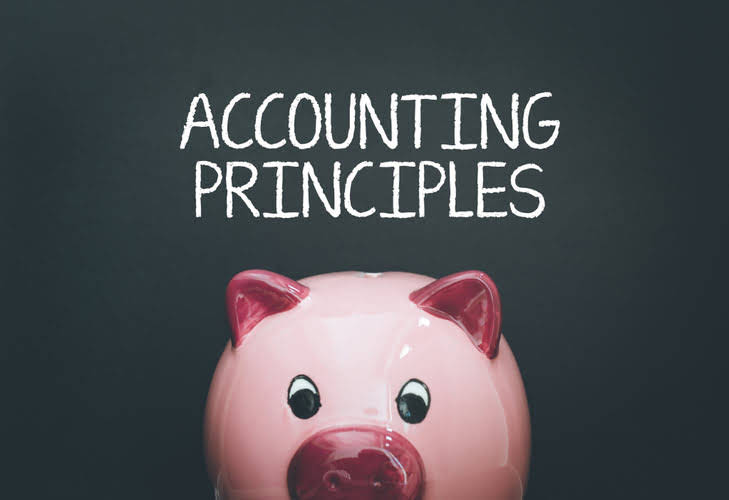
The stockholder’s equity can be calculated by deducting the total liabilities from the company’s total assets. In other words, the Shareholder’s equity formula finds the net value of a business or the amount that the shareholders can claim if the company’s assets are liquidated, and its debts are repaid. The higher the proportion of debt to equity, the more risky the company appears to be.

What is Stockholders’ Equity?
A balance sheet liability account that reports amounts how to find stockholders equity received in advance of being earned. For example, if a company receives $10,000 today to perform services in the next accounting period, the $10,000 is unearned in this accounting period. It is deferred to the next accounting period by crediting a liability account such as Unearned Revenues.
What Does a Shareholders’ Equity Ratio of 100% Indicate?

Home equity can be used to get a home equity loan, a second mortgage, or a home equity line of credit (HELOC). An equity takeout is taking money out of a property or borrowing money against it. Therefore, the stockholder’s equity of Apple Inc. has declined from $134,047 Mn as at September 30, 2017 to $107,147 Mn as at September 29, 2018.
- However, there are several “buckets” and line items that are almost always included in common balance sheets.
- If the dividend percentage on the preferred stock is close to the rate demanded by the financial markets, the preferred stock will sell at a price that is close to its par value.
- The total book value of the preferred stock is the book value per share times the total number of preferred shares outstanding.
- This account is then closed to the owner’s capital account or a corporation’s retained earnings account.
Monitoring Your Company’s Financial Position
- Similarly, the amount not yet allocated is not an indication of its current market value.
- Dividend recapitalization—if a company’s shareholders’ equity remains negative and continues to trend downward, it is a sign that the company could soon face insolvency.
- An alternative to having Appropriated Retained Earnings appearing on the balance sheet is to disclose the specific situation in the notes to the financial statements.
- Non-current assets are assets that are not turned into cash easily, are expected to be turned into cash within a year, and/or have a lifespan of more than a year.
Some liabilities are considered off the balance sheet, meaning they do not appear on the balance sheet. If the company ever had to be liquidated, it’s what the shareholders would get. The following are the components that make up the stakeholders’ equity section in the balance sheet. Financial health can be understood by analyzing the statement of equity as it gives a broad picture of the performance. When inventory items are acquired or produced at varying costs, the company will need to make an assumption on how to flow the changing costs. The term that refers to the stock of a corporation which is traded on the stock exchanges (as opposed to stock that is privately held among a few individuals).

Dividend Payments
Retained earnings are the part of a company’s profits that it keeps for reinvestment after dividends and other distributions are paid to investors. A balance sheet provides a snapshot of a company’s financial performance at a given point in time. This financial statement is used both internally and externally to determine the so-called “book value” of the company, or its overall worth. A balance sheet is one of the primary statements used to determine the net worth of a company and get a quick overview of its financial health.

Other accrued expenses and liabilities
- Long-term liabilities are those that are due for repayment in periods beyond one year; they include bonds payable, leases, and pension obligations.
- At the end of the financial reporting period of a corporation, a balance sheet presents a snapshot of the assets, liabilities, and equity of a company.
- In each of these examples the par value is meaningful because it is a factor in determining the dividend amounts.
- These statements reflect the equity portion of the balance sheet, detailing how equity capital is built up through common stock, preferred stock, retained earnings, and additional paid-in capital.
- An established corporation that has been profitable for many years will often have a very large credit balance in its Retained Earnings account, frequently exceeding the paid-in capital from investors.
For example, if a company takes on a bank loan to be paid off in 5-years, this account will include the portion of that loan due in the next year. Includes non-AP obligations that are due within one year’s time or within one operating cycle for the company (whichever is longest). Notes payable may also have a long-term version, which includes notes with a maturity of more than one Accounting Security year. This line item includes all of the company’s intangible fixed assets, which may or may not be identifiable. Identifiable intangible assets include patents, licenses, and secret formulas. Property, Plant, and Equipment (also known as PP&E) capture the company’s tangible fixed assets.
With a greater understanding of a balance sheet and how it is constructed, we can review some techniques used to analyze the information contained within a balance sheet. As you can see from the balance sheet above, Walmart had a large cash position of $9 billion in 2025, and inventories valued at over $56.4 billion. This reflects the fact that Walmart is a big-box retailer with its many stores and online fulfillment centers stocked with thousands of items ready for sale. The current portion of longer-term borrowing, such as the latest interest payment on a 10-year loan, is also recorded as a current liability. If you are a shareholder of a company or a potential investor, it is important to understand how the balance sheet is structured, how to read one, and the basics of net sales how to analyze it.
